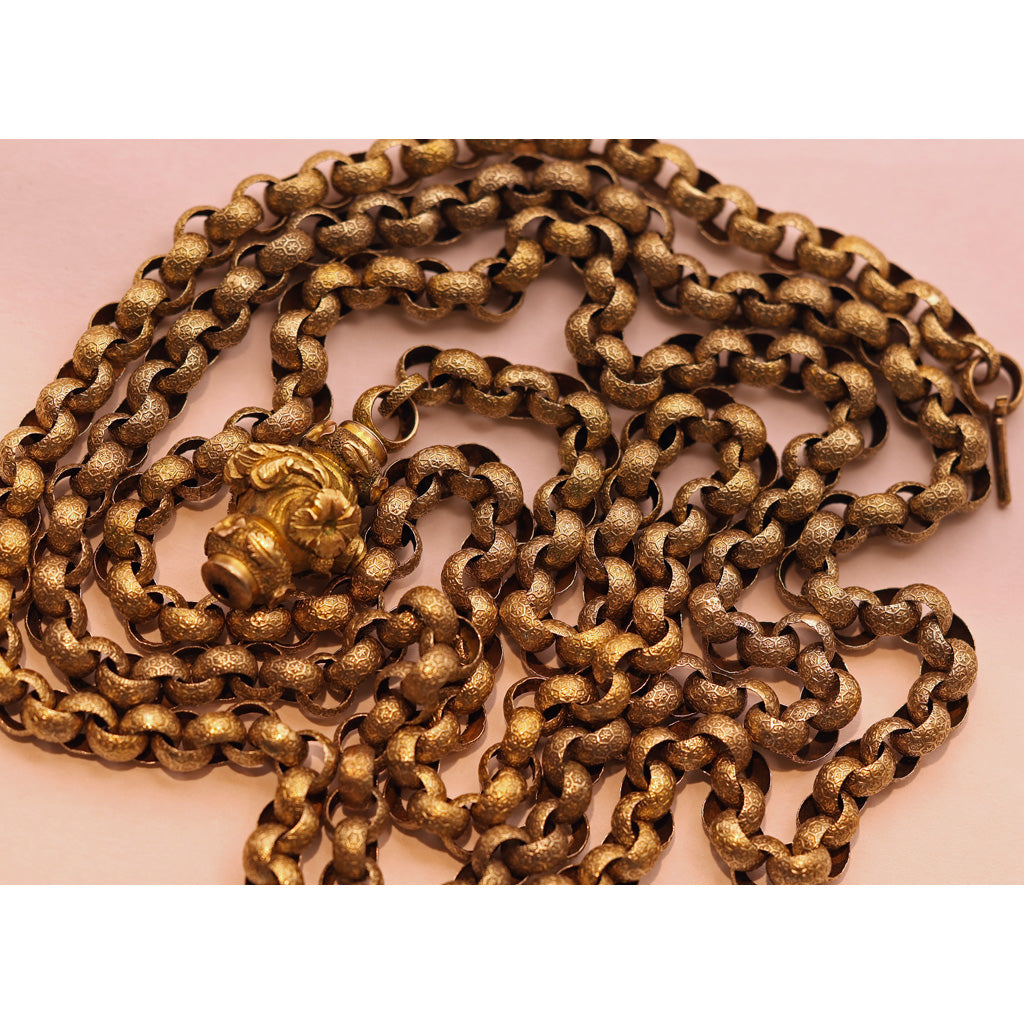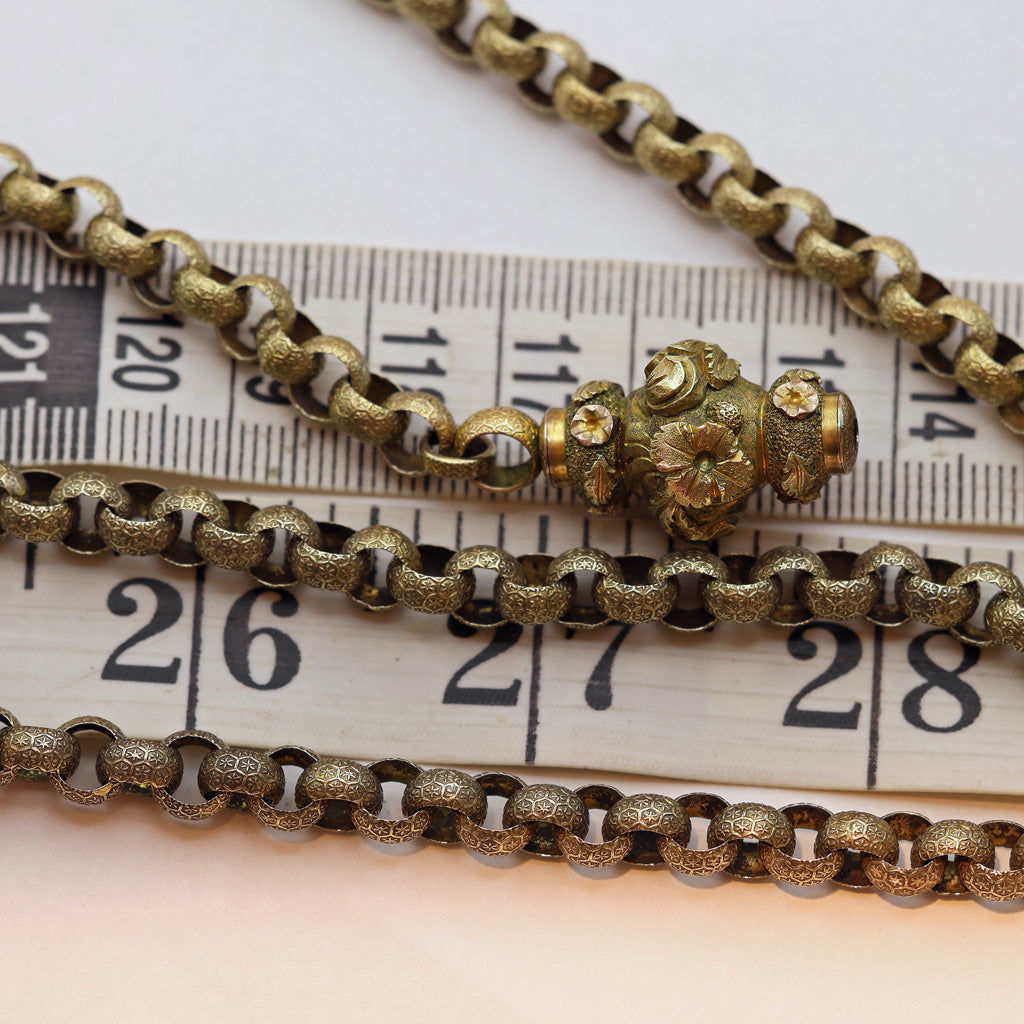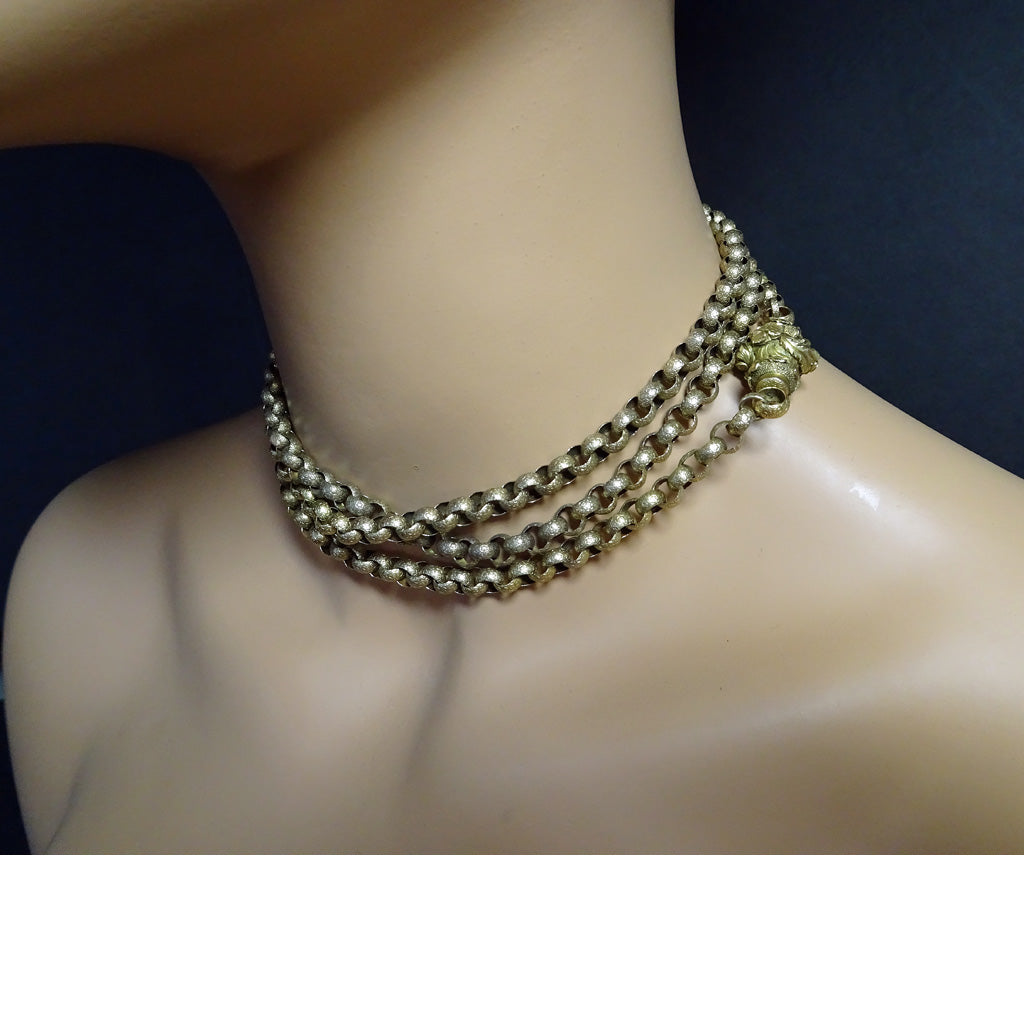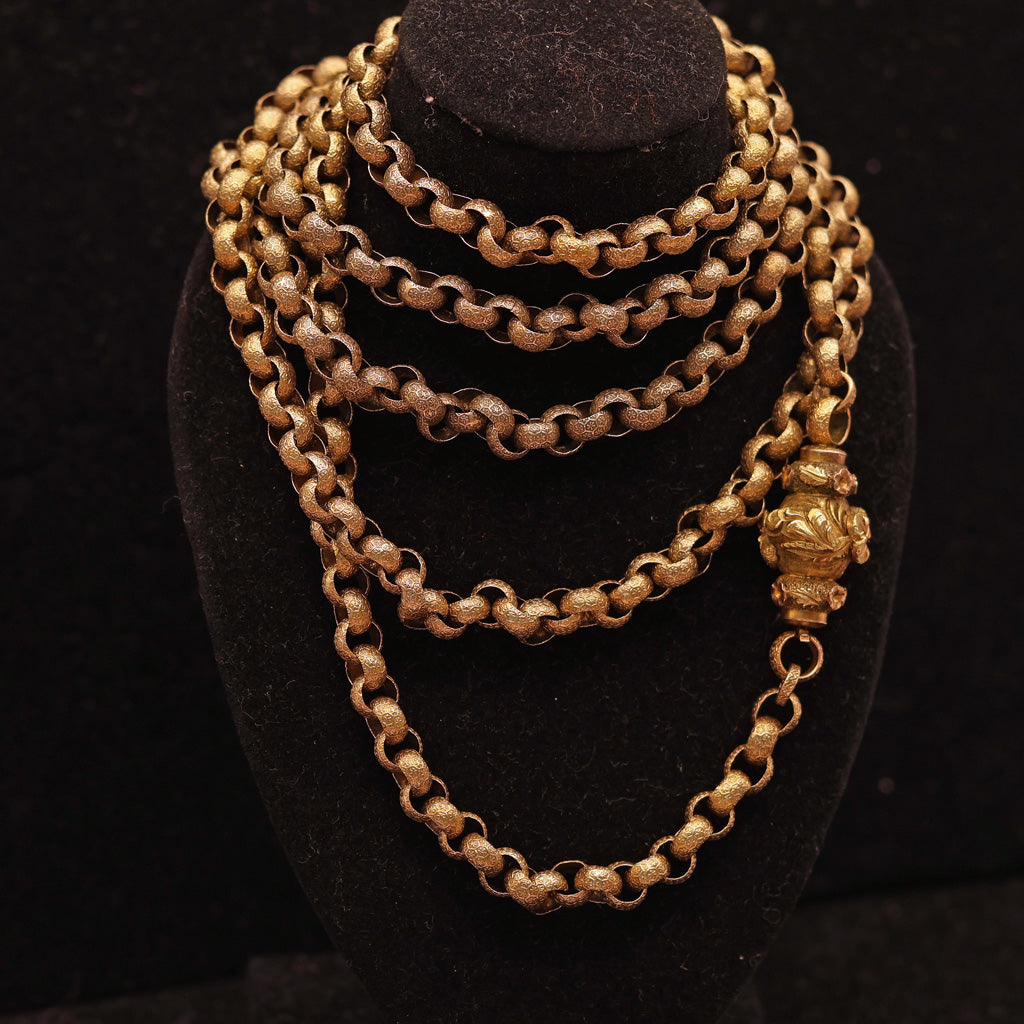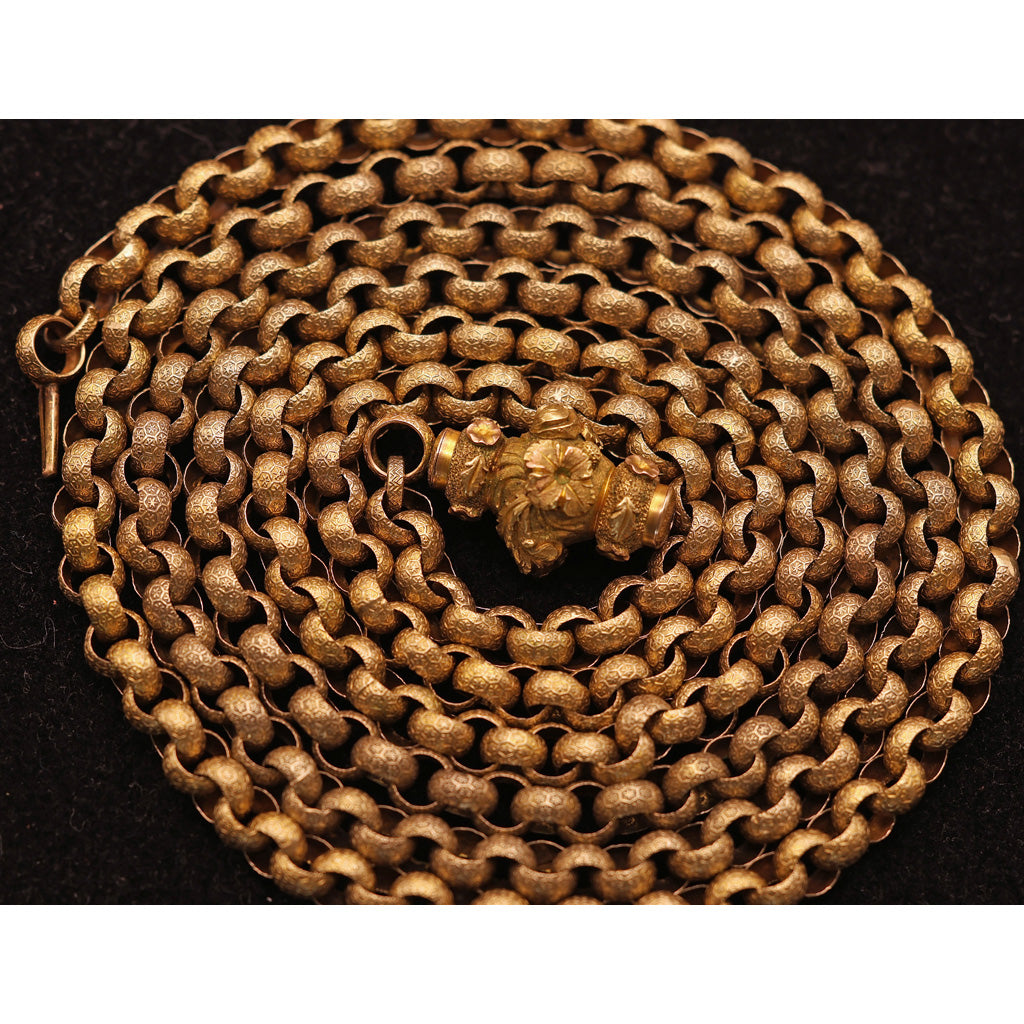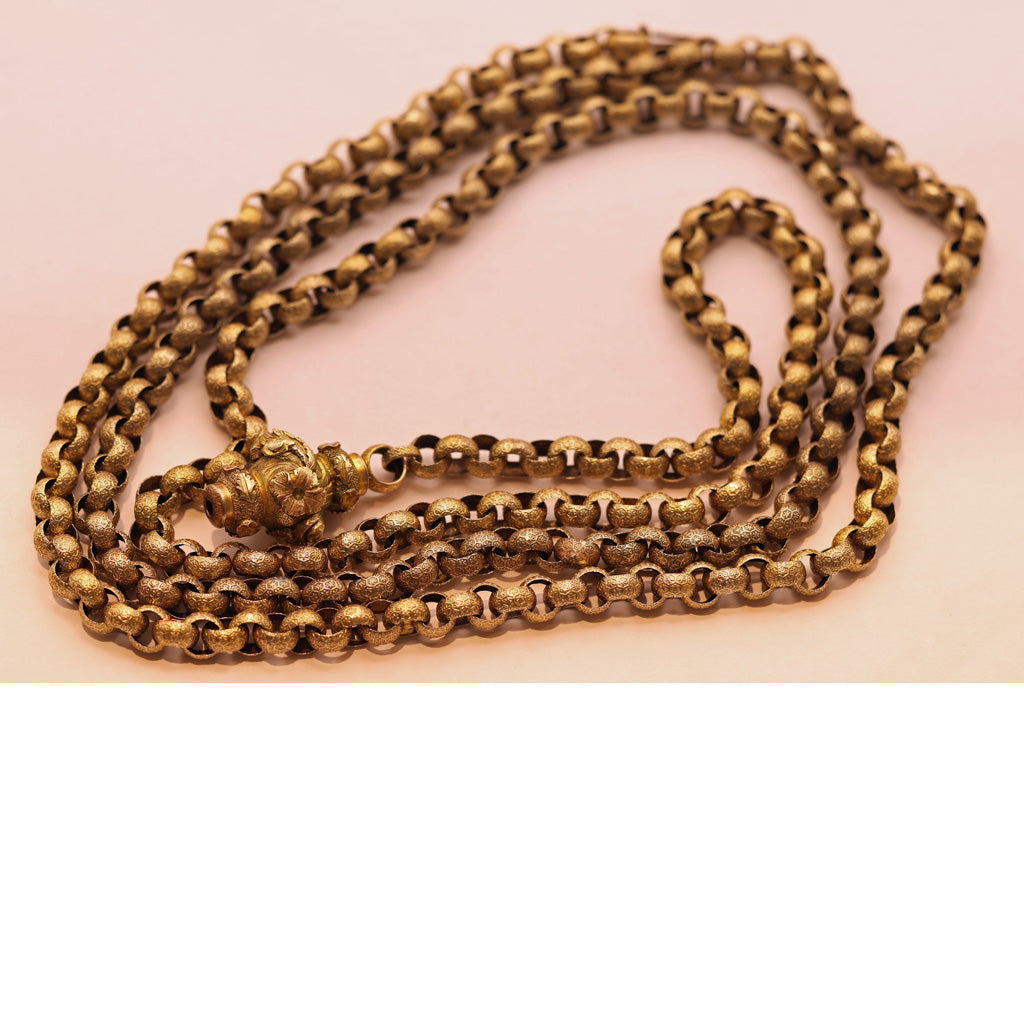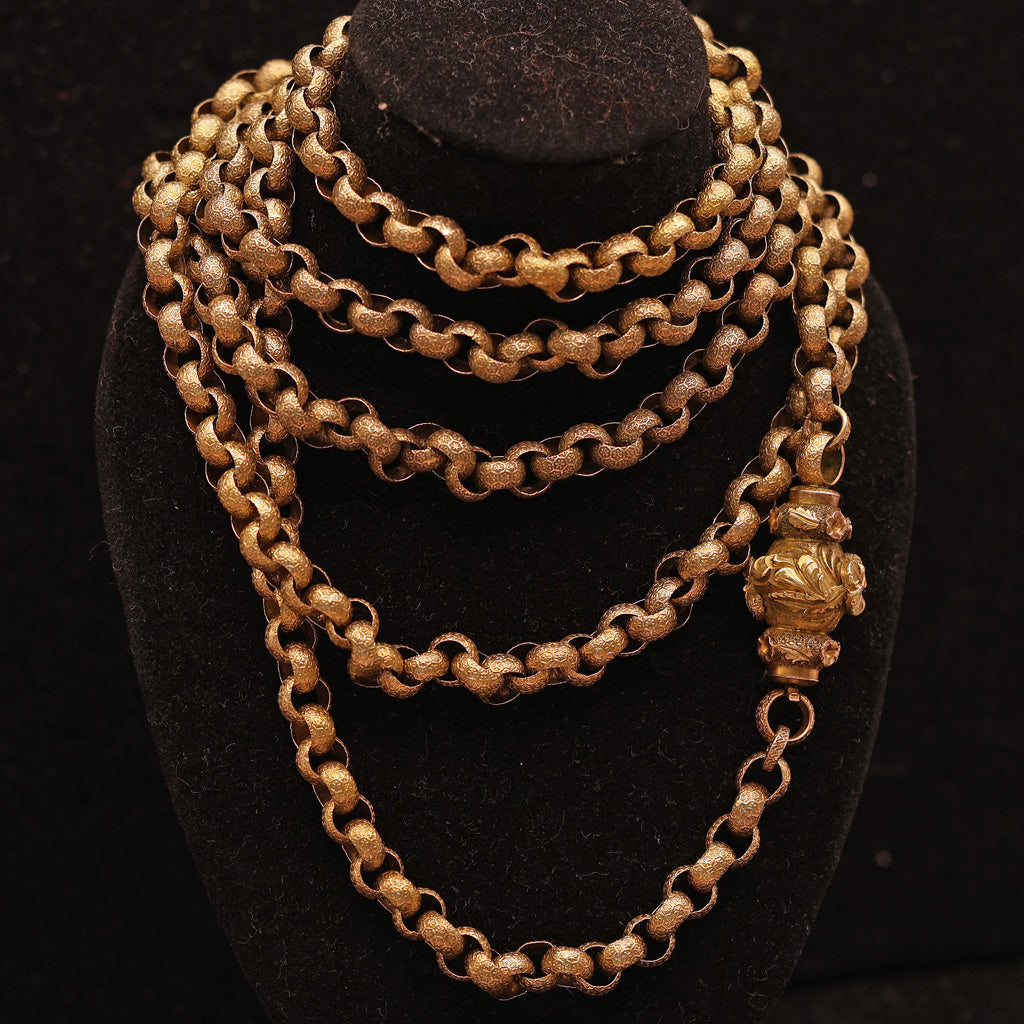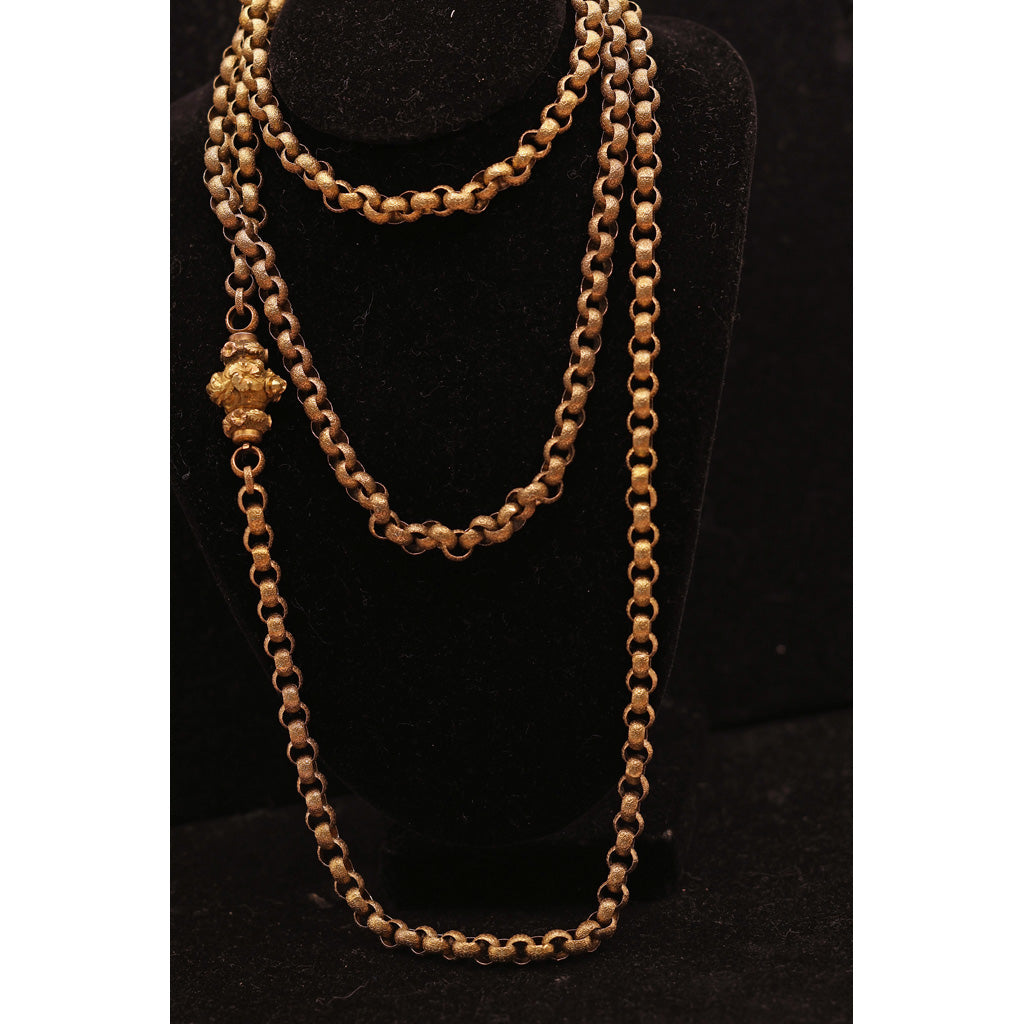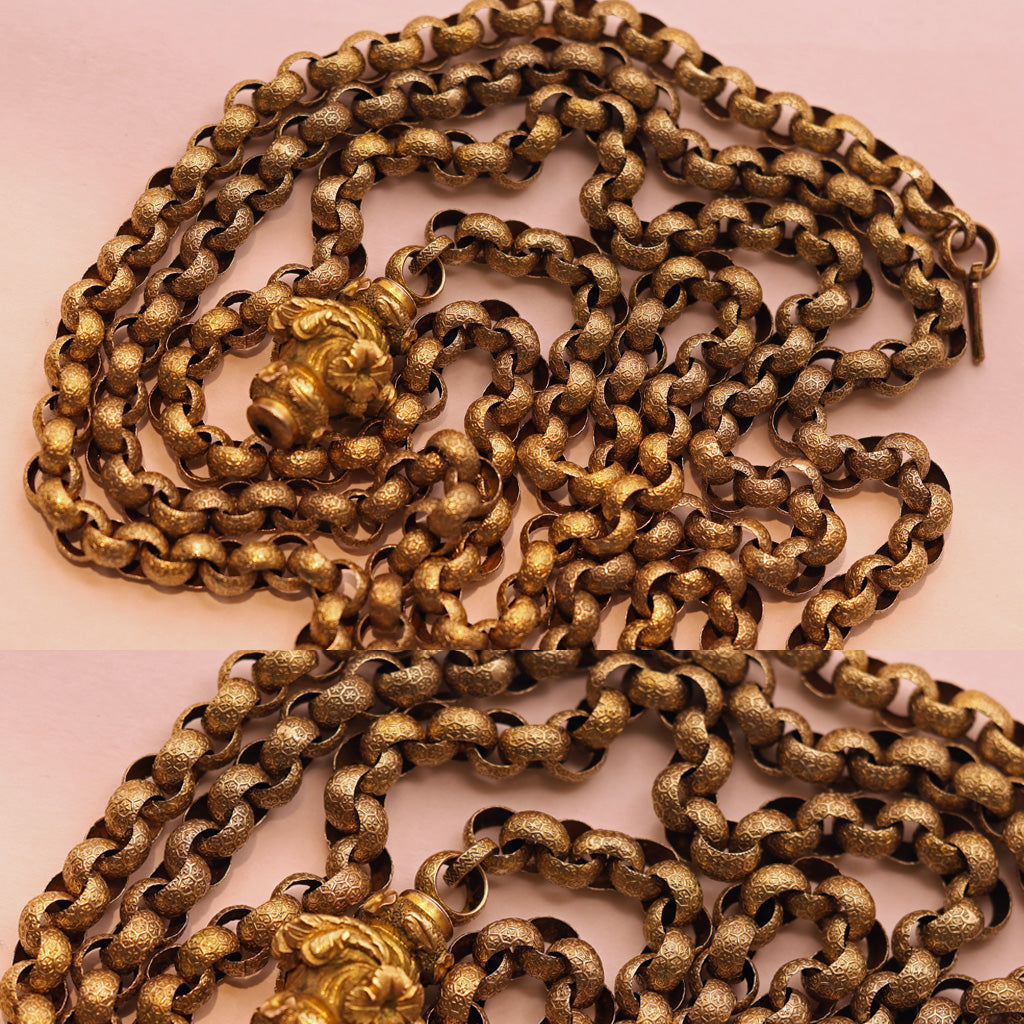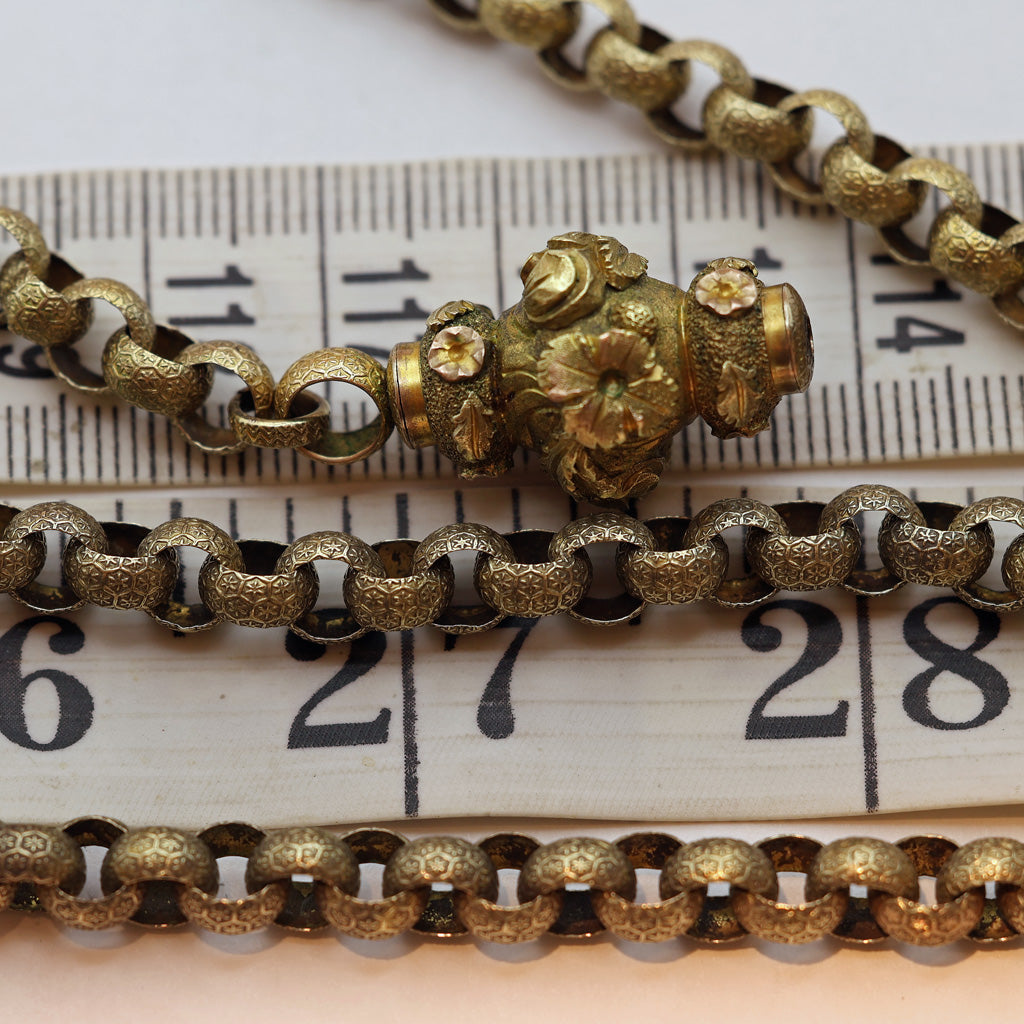Brenda Ginsberg Antique Jewelry
Antique Georgian Muff Chain long necklace 18k gold 46inch long guard chain (7498)
Antique Georgian Muff Chain long necklace 18k gold 46inch long guard chain (7498)
Couldn't load pickup availability
Antique Georgian very long muff, long guard chain or sautoir. 18k gold chain with 10k clasp. Almost certainly made in England, early 1800's.
Measurements:
Weight is 43.1 grams. 46inches (117cm) long.
Description :
Composed of alternating horizontal and vertically linked ribbon loops. Exceptionally long - this can be worn in many ways, wound multiple times around the neck or hanging way down below the waist. The clasp makes it easier to arrange per your choice.
The gold ribbon with hexagonal honey-comb pattern, each cell with a 6-sided starburst in the middle.
The barrel-shaped clasp with moulded flowers and fruit and a textured surface. The tongue of the clasp clicks securely into place and has a little 'lever' or thumbpiece to remove it. Surface pattern at either end of clasp is the same as that on the links. (Honeycomb with stars).
Marks and Metal:
We had the gold professionally tested. The chain is over 18k. The tongue of the clasp is 14k. The clasp tests various levels of gold - between 10 and 16k, which is not uncommon for Georgian gold - see note on metals below. To err on the side of caution, we will call it 10k.
Condition:
Good with negligible wear commensurate with age. Please see enlarged pictures and don't hesitate to ask questions which we will do our best to answer.
THE STORY:
In cold weather, ladies carried muffs - usually a cylinder or tube of fur in which to keep their hands warm. Holding the muff to their person was a long chain, the muff chain, worn around the neck and preventing the muff from falling to the ground. These chains were often used to hold watches, vinaigrettes (smelling salts) or other utensils. They are incredibly versatile and can be worn singly - very long with the utensil tucked into the waist band or lower pocket or wound multiple times around the neck.
Muff chains in 18k gold are rare and this was probably owned by a very wealthy woman. The fact that it survived over 200 years, shows that the family had no need to melt, sell or replace it.

